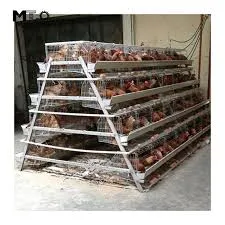Efficient Pellet Machines for Producing High-Quality Fish Feed Solutions
Dec . 15, 2024 06:10 Back to list
Efficient Pellet Machines for Producing High-Quality Fish Feed Solutions
The Importance of Pellet Machines for Fish Feed Production
In the aquaculture industry, the formulation and production of high-quality fish feed is crucial for the health and growth of aquatic species. Among the various tools and technologies that support this vital process, pellet machines have emerged as one of the most significant innovations. These machines not only enhance the efficiency of fish feed production but also ensure that the feed meets the nutritional requirements of different fish species.
The Role of Fish Feed in Aquaculture
Fish feed plays a critical role in aquaculture, serving as the primary source of nutrition for farmed fish. The right feed formulation ensures that fish receive essential nutrients, which promotes growth, enhances health, and improves feed conversion ratios. The nutritional needs of fish vary based on their species, age, and developmental stage, making it imperative for feed to be carefully formulated. Pellet machines enable manufacturers to create customized feed pellets tailored to specific fish species, thus optimizing their growth potential.
Benefits of Using Pellet Machines
1. Enhanced Nutritional Value One of the primary advantages of using pellet machines is the ability to incorporate diverse ingredients, such as protein sources, vitamins, and minerals. Well-formulated pellets can provide a balanced diet that improves fish health and growth rates.
2. Texture and Digestibility The process of pelletizing allows for better texture and digestibility of the feed. The high temperature and pressure involved in pelleting help break down ingredients, making it easier for fish to consume and absorb nutrients.
3. Reduced Feed Waste Pelletized feed typically leads to lower feed wastage compared to loose feed. Fish are more likely to consume pellets entirely rather than leaving remnants, reducing pollution in aquaculture environments and ensuring that resources are used efficiently.
4. Controlled Feeding Behavior Pellets can be designed to float or sink, which allows fish farmers to control feeding behavior effectively. Floating pellets are particularly useful for species that feed at the surface, while sinking pellets cater to bottom feeders. This adaptability can lead to improved feeding practices.
5. Longer Shelf Life Pelleted feed tends to have a longer shelf life compared to powder feed, allowing producers to maintain inventories without the risk of spoilage. This is particularly important in aquaculture operations where consistent quality and availability of feed are essential.
The Pelletizing Process
pellet machine for fish feed

The process of creating pelletized fish feed typically involves several key stages
1. Ingredient Mixing The first step is to mix raw ingredients such as fishmeal, grains, and additives to achieve a balanced formulation.
2. Conditioning Once mixed, the ingredients are conditioned with steam and moisture to prepare them for pelletizing. This process helps to gelatinize starches and improve the binding of the feed.
3. Pelletizing The conditioned mixture is then fed into the pellet machine, where it is compressed and forced through a die to create pellets of uniform size and shape. This stage is critical, as the size of pellets can significantly impact fish feeding.
4. Cooling and Drying After pelletizing, the feed needs to be cooled and dried to reduce moisture content, ensuring that the pellets retain their structure and nutritional value over time.
5. Packaging Once cooled and dried, the pellets are packaged for distribution. Proper packaging is vital for maintaining quality and preventing contamination.
Future Trends
The demand for aquaculture products is on the rise, driven by a growing global population and increasing awareness of the benefits of fish as a source of protein. As a result, advancements in pellet machine technology are expected to continue. Innovations such as more efficient energy consumption, automated systems, and the integration of advanced nutrition science will likely lead to even better feed quality and production efficiency.
Conclusion
Pellet machines are essential tools in the fish feed industry, enabling the production of high-quality, nutritionally balanced feeds tailored to the needs of various fish species. By enhancing the efficiency of feed production and minimizing waste, these machines contribute significantly to sustainable aquaculture practices. As the industry evolves, the continuous development of pellet technology will play a crucial role in supporting the growing demand for fish and seafood, ensuring that aquaculture remains a viable and sustainable source of nutrition for future generations.
-
Hot Sale 24 & 18 Door Rabbit Cages - Premium Breeding Solutions
NewsJul.25,2025
-
Automatic Feeding Line System Pan Feeder Nipple Drinker - Anping County Yize Metal Products Co., Ltd.
NewsJul.21,2025
-
Automatic Feeding Line System Pan Feeder Nipple Drinker - Anping County Yize Metal Products Co., Ltd.
NewsJul.21,2025
-
Automatic Feeding Line System - Anping Yize | Precision & Nipple
NewsJul.21,2025
-
Automatic Feeding Line System - Anping Yize | Precision & Nipple
NewsJul.21,2025
-
Automatic Feeding Line System-Anping County Yize Metal Products Co., Ltd.|Efficient Feed Distribution&Customized Animal Farming Solutions
NewsJul.21,2025






